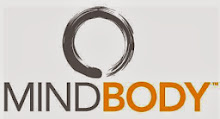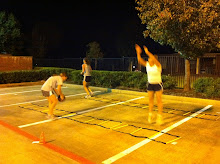
Measuring Intensity
There are several ways to measure exercise intensity.1 One common method measures the amount of oxygen consumed by the body as an activity is performed. This method is expressed in studies as the percentage of maximum oxygen consumption, or %-VO2 max. The oxygen consumption method is used most often in a research setting.
Another method of measurement works with the increased heart rate that occurs with exercise. The greater the intensity of the activity being performed, the higher the heart rate. This method is expressed as a percentage of maximum heart rate or %-MHR.
Measuring heart rate is the method most often used to evaluate intensity in everyday life or to set the level of exercise in physical training.
Low, moderate and high levels of exercise intensity, as measured by heart rate, are defined as follows:
Low (or Light) is about 40-54% MHR.
Moderate is 55-69% MHR.
High (or Vigorous) is equal to or greater than 70% MHR.
An individual's maximum heart rate can be estimated by using the formula: 220 – age in years = MHR. Pulse rate can then be monitored while an exercise is being done and the % MHR calculated to assess intensity.
So, for example, the estimated MHR for a 50-year-old individual would be 220 - 50, or 170. Let's say that an individual's heart rate measured 100 beats per minute performing a certain activity. Since 100 is approximately 59% of the MHR (170), that would be considered a moderate level of exercise. The overall levels of intensity for a 50-year-old would be as follows:
Low Intensity: heart rate is 68-to-92 beats per minute.
Moderate Intensity: heart rate is 93-to-118 beats per minute.
High Intensity: heart rate is more than 119 beats per minute.
Rating of Perceived Exertion
A simpler method than monitoring heart rate, which also corresponds with measured MHR, is the Rating of Perceived Exertion (or RPE). RPE is measured by having a person rate how they feel (psychological perception) when performing an activity. This kind of a survey, in which a person rates their perceptions, attitudes or feelings on a scale, is known as a Likert scale.
The ratings of physical effort and feelings correspond with heart rate, and people can learn to exercise at a desired level of intensity based on their subjective feelings of exertion. It should be noted, however, that people who have been previously inactive tend to overestimate their intensity level, especially for moderate activity.
 Level of Intensity--- RPE--- Physical Cues
Level of Intensity--- RPE--- Physical CuesLight--- Easy ---Does not induce sweating unless it's a hot, humid day. There is no noticeable change in breathing patterns.
Moderate--- Somewhat hard--- Will break a sweat after performing the activity for about 10 minutes. Breathing becomes deeper and more frequent. You can carry on a conversation but not sing.
High--- Hard--- Will break a sweat after 3-5 minutes. Breathing is deep and rapid. You can only talk in short phrases.
All activity whether done at a light, moderate, or high level of intensity expends energy, and therefore is helpful for weight loss. The more intense the exercise and/or the longer the duration of exercise, the greater the energy expended per minute and the greater the impact on weight loss.




















No comments:
Post a Comment